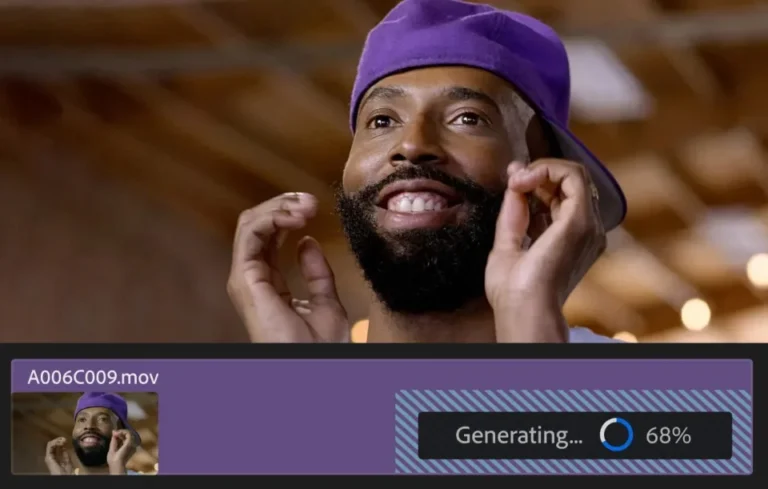Shots can be stretched out using the Generative Extend feature of Premiere Pro.
As Adobe rolls out its own model, the company is joining a number of other companies in the generative artificial intelligence (GAI) area. The Firefly Video Model is the engine that drives a variety of features throughout the extensive range of applications that the company offers. At the Adobe MAX conference, the business made the announcement that some of those are currently accessible in beta form.
Premiere Pro has a tool called Generative Extend, which was displayed in a preview by Adobe earlier this year. With this feature, editors are able to incorporate created film and audio at the beginning or the end of a clip. In the event that the required shot is unavailable, this can be essential in covering a transition or editing. Simply dragging out the beginning or the finish of a clip is all that content editors need to do. Additionally, according to Adobe, the technology is able to fix eyelines and motions that alter abruptly in the middle of a shot.
Over the course of the past year, Adobe has collaborated with professional video editors to have a better understanding of how GAI could assist in resolving some challenges that have arisen in their workflow. It’s possible that Generative Extend will provide them with the footage they require, but other creatives might be less enthusiastic about it. There is a possibility that reshoots may no longer be necessary, which will result in the cast and crew losing days of opportunity to work and earn money.
It should be noted, however, that Generative Extend is only designed for minor adjustments. Additionally, the feature is restricted to a maximum resolution of 1080p for the time being, which means that it is not a cinematic experience.
Adobe gave a sample of their text-to-video and image-to-video capabilities in September. These capabilities are comparable to those offered by OpenAI’s Sora and Meta’s Movie Gen. You may be need to join a waitlist in order to access those, but they are already available in the beta version of the Firefly web app.
In the same way that existing Firefly generative models are designed to be safe for commercial usage, Adobe asserts that the Firefly Video Model and the features that it drives are also created from the same perspective. The watermarks that are associated with its Content Credentials are applied to everything the video model produces.
Generative Fill and Generative Expand are now running on the most recent version of the Firefly Image Model, which Adobe had previously demonstrated to the public earlier this year. According to the business, this new version of Photoshop is capable of generating images at a rate that is four times quicker than the prior versions. It is quite easy to understand what the Generate Similar tool is capable of doing; it may generate different versions of an object in the image until you discover the one that you like best. These functionalities were made available by Adobe today.
In addition, Adobe is introducing a new and useful function to the Remove tool, which will make it much simpler to remove people and objects from an image. This feature is similar to the Magic Eraser that Google offers. Using Distraction Removal, you can eliminate certain components that are frequently encountered with just a single click. To give you an example, it may eliminate unnecessary wires and cables from your travel images and delete tourists from your image collection.
In the meantime, the collaborative photo and video production platform Frame.io V4, which is touted to be the most significant update to the platform since it was first introduced nine years ago, is now available to all users. Adobe has completely revamped it in order to increase the efficiency of processes and to improve the video player, among other things. In addition, it was discovered that Canon, Nikon, and Leica will be supporting the Camera to Cloud (C2C) feature of Frame.io. This feature enables users to directly upload photographs and videos to the platform. This indicates that the majority of big manufacturers are now embracing C2C, according to Adobe.

